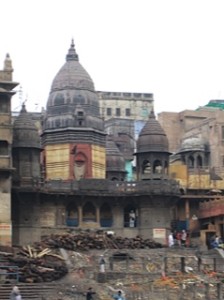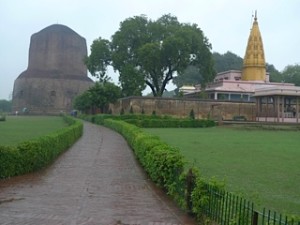A discussion of the interrelations between food, health, and the environment is extremely topical today. In part three of this three part essay we’ll discuss Current World Problems.
Current world problems
Once we become ecologically literate, once we understand the processes and patterns of relationships that enable ecosystems to sustain life, we will also understand the many ways in which our human civilization, especially since the Industrial Revolution, has ignored these ecological patterns and processes and has interfered with them. And we will realize that these interferences are the fundamental causes of many of our current world problems.
It is now becoming more and more evident that the major problems of our time cannot be understood in isolation. They are systemic problems, which means that they are all interconnected and interdependent. One of the most detailed and masterful documentations of the fundamental interconnectedness of world problems is the new book by Lester Brown, Plan B (Norton, 2008). Brown, founder of the Worldwatch Institute, demonstrates in this book with impeccable clarity how the vicious circle of demographic pressure and poverty leads to the depletion of resources – falling water tables, wells going dry, shrinking forests, collapsing fisheries, eroding soils, grasslands turning into desert, and so on – and how this resource depletion, exacerbated by climate change, produces failing states whose governments can no longer provide security for their citizens, some of whom in sheer desperation turn to terrorism.
Virtually all our environmental problems are threats to our food security – falling water tables; increasing conversion of cropland to non-farm uses; more extreme climate events, such as heat waves, droughts, and floods; and, most recently, increasing diversion of grains to biofuel.
A critical factor in all this is the fact that world oil production is reaching its peak. This means that, from now on, oil production will begin to decrease worldwide, extraction of the remaining oil will be more and more costly, and hence the price of oil will continue to rise. Most affected will be the oil-intensive segments of the global economy, in particular the automobile, food, and airline industries.
The search for alternative energy sources has recently led to increased production of ethanol and other biofuels, especially in the United States, Brazil, and China. And since the fuel-value of grain is higher on the markets than its food-value, more and more grain is diverted from food to producing fuels. At the same time, the price of grain is moving up toward the oil-equivalent value. This is one of the main reasons for the recent sharp rise of food prices. Another reason, of course, is that a petrochemical, mechanized, and centralized system of agriculture is highly dependent on oil and will produce more expensive food as the price of oil increases. Indeed, industrial farming uses 10 times more energy than sustainable, organic farming.
The fact that the price of grain is now keyed to the price of oil is only possible because our global economic system has no ethical dimension. In such a system, the question, “Shall we use grain to fuel cars or to feed people?” has a clear answer. The market says, “Let’s fuel the cars.”
This is even more perverse in view of the fact that 20 percent of our grain harvest will supply less than 4 percent of automotive fuel. Indeed, the entire ethanol production in this country could easily be replaced by raising average fuel efficiency by 20 percent (i.e. from 21 mpg to 25 mpg), which is nothing, given the technologies available today.
The recent sharp increase in grain prices has wreaked havoc in the world’s grain markets, and world hunger is now on the rise again after a long steady decline. In addition, increased fuel consumption accelerates global warming, which results in crop losses in heat waves that make crops wither, and from the loss of glaciers that feed rivers essential to irrigation. When we think systemically and understand how all these processes are interrelated, we realize that the vehicles we drive, and other consumer choices we make, have a major impact on the food supply to large populations in Asia and Africa.
All these problems, ultimately, must be seen as just different facets of one single crisis, which is largely a crisis of perception. It derives from the fact that most people in our society, and especially our political and corporate leaders, subscribe to the concepts of an outdated worldview, a perception of reality inadequate for dealing with our overpopulated, globally interconnected world.
The main message of Lester Brown’s Plan B, is that there are solutions to the major problems of our time; some of them even simple. But they require a radical shift in our perceptions, our thinking, our values. And, indeed, we are now at the beginning of such a fundamental change of worldview, a change of paradigms as radical as the Copernican Revolution. Systems thinking and ecological literacy are two key elements of the new paradigm, and very helpful for understanding the interconnections between food, health, and the environment, but also for understanding the profound transformation that is needed globally for humanity to survive.
This essay is adapted from a speech Fritjof Capra delivered at a professional development institute, “Linking Food, Health, and the Environment,” hosted by the Center for Ecoliteracy and Teachers College Columbia University in the summer of 2008.
http://www.ecoliteracy.org/essays/new-facts-life
 The beautiful Varanasi, India is the holiest of Hindu’s sacred cities. The oldest inhabited city in the world lies beside the sacred River Ganges, nestled between the River Asi, to the south and the River Varuna, to the north. The flourishing city of Varanasi is rich in history and ceremonious traditions. The riverfront plays host to Ghats, which are stone stairways leading to the river; eighty-four of them, in fact. Each of the Ghats is significant in its own way and many travelers take part in freeing themselves from sin by bathing in the sacred river.
The beautiful Varanasi, India is the holiest of Hindu’s sacred cities. The oldest inhabited city in the world lies beside the sacred River Ganges, nestled between the River Asi, to the south and the River Varuna, to the north. The flourishing city of Varanasi is rich in history and ceremonious traditions. The riverfront plays host to Ghats, which are stone stairways leading to the river; eighty-four of them, in fact. Each of the Ghats is significant in its own way and many travelers take part in freeing themselves from sin by bathing in the sacred river. The history and sacred traditions of Varanasi are said to date back as far as 5,000 years. The area is lavished with a variety of religious beliefs; each encompassing their rituals and structures. Buddhism is marked by the Dhamek Stupa shrine, where it is said that the first sermon of Gautama Buddha was given. The followers of the Jain faith claim this area for worship and pilgrimage. Islamic sites are present in the area and date back as far as 1033 CE when the area was invaded and ruled by Muslims. In vast significance, the Hindu temples are effervescent in the area; after several periods of destruction by the Muslims, Varanasi rebuilt the temples, boasting its independence since the 18th century.
The history and sacred traditions of Varanasi are said to date back as far as 5,000 years. The area is lavished with a variety of religious beliefs; each encompassing their rituals and structures. Buddhism is marked by the Dhamek Stupa shrine, where it is said that the first sermon of Gautama Buddha was given. The followers of the Jain faith claim this area for worship and pilgrimage. Islamic sites are present in the area and date back as far as 1033 CE when the area was invaded and ruled by Muslims. In vast significance, the Hindu temples are effervescent in the area; after several periods of destruction by the Muslims, Varanasi rebuilt the temples, boasting its independence since the 18th century.